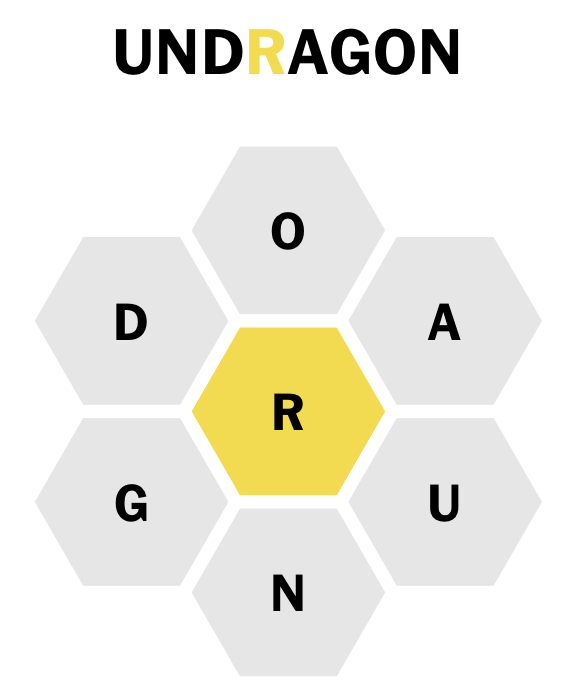be your own algorithm

Damon Krukowski: “I know it can be difficult, with so much choice, to figure out what to focus on. But on top of everything, you can preview most anything before committing. What’s not to like? Build a library, and you can be your own algorithm.”

Currently reading: The Fifth Head of Cerberus by Gene Wolfe 📚
FWIW
I’m not watching The Last of Us because (a) I don’t have and don’t want HBO, (b) I think all the changes on zombie stories have already been rung, but above all, (c) I viscerally dislike stories based on the premise that some human beings aren’t really human beings after all and can therefore be hated and killed with impunity. Zombie stories aren’t dystopian, they’re wish-fulfillment dreams, and the dream they fulfill is the dream of guilt-free hatred of the Other. And in our culture we get enough of that from TV news and the internet.
Exception to (c): Shaun of the Dead, naturally.
It could be that what we have in Esther isn’t just a theology of divine providence and protection but also something like a doctrine of “the justification of the ungodly” (Rom. 4:5), God’s commitment to stand by God’s people when they’re at their covenant-keeping worst and see them through anyway. In this way, there may be more theology, not less, in what Dunne calls this most “secular” of biblical books. God not only intervenes; God intervenes precisely at the point when no human virtue or piety would compel him to do so, where the only hope is the sheer divine intention to bless, save, and protect, regardless of whether it’s acknowledged by the saved ones at all.
From my dear friend John Wilson:
Ever since I “discovered” book reviews, when I was in high school, I have been in love with this simple but infinitely flexible genre. Much of my adult life has been devoted to scouring publishers’ catalogues and other sources of information on forthcoming books, reviewing books myself and assigning them for review, editing reviews and seeing them into print, and of course reading thousands of reviews over the decades — a practice I will continue as long as I have my faculties. […]
At the same time, I feel some reservations. When Nadya Williams invited me to lead off this series, she spoke of “the value/virtue of book reviews in this day and age,” and she added: “My thought is that we can encourage much more productive discussions about cultural crises using books than via provocative op-eds.” But I don’t want to encourage more discussion about “cultural crises”; in fact, I think much of our public conversation, across the ideological spectrum, is characterized by an obsessive focus on “cultural crises.” I’m not saying that these “crises” are simply manufactured (though certainly some of them are). Rather, I believe that endless talk about these crises characterizes public discourse to an unhealthy and extremely tedious degree. Of course, that is apparent not only in op-eds and essays and books claiming to unpack these “crises” but also in reviews. And yet the blessed range of reviewing ensures that such voices do not dominate.
Amen to all this. But goodness, is it difficult to get many editors interested in books that aren’t somehow implicated in (or can somehow be shoehorned into) the American crisis discourse.
I traded my smartphone for a dumbphone to simplify my life. Then I revived my iPod. Then I bought a GPS. Then I bought a point-and-shoot camera.
You might wonder whether life is really simpler this way. Wouldn’t it be far more convenient to use a single device to accomplish all of these tasks?
Technically, yes. Psychologically, no.
This is correct.
New edition of the newletter, with a movie title sequence, Italian advertising, and Bob Dylan, among other things.
From James Agee’s obituary for H. G. Wells in Time (Aug. 26, 1946):
It was H. G. Wells's tragedy that he lived long enough to have a second thought. All his life he had worked to warn and teach the human race and, within the limits of thought, to save it. At the end, he was forced to realize that his work and his hopes were vain; that either he or the human race were, somehow, dreadfully wrong. Characteristically, with the last of the valiant, innocent optimism which had always sustained him, he blamed it all on the human race.
Some people found his last bitter utterances offensive, even cracked. Others found them unbearably pathetic, for there is no anguish to compare with that of a man who has lived on a faith of any kind and found it wanting. H. G. Wells was such a man, a great pietistic writer, set on fire by reason, not by God; but in his era, among the most devoted, eloquent and honest.
“I’ve had Holy Communion and four doughnuts, so this has been a great day” – my exact words, just now.
doin thangs

I haven’t written much over the years about what people call “productivity,” partly because I don’t have a lot to say. A few years ago I thought I would permanently be a Zettelkasten kind of guy, but then I discovered that I need different methods for different projects. But some things have remained constant:
- I have two guiding principles;
- My only task-management tool is a calendar; and
- I use that calendar to schedule regular times for reviewing my notes and drafts.
I haven’t written about that third one before, but it’s really the key ingredient. Many people think that having the right note-taking tool is essential to productivity, but I don’t. Sometimes I make notes on my computer in text files; sometimes I write in notebooks (of various kinds and sizes); sometimes I make voice notes on my phone. I just use whatever happens to be easiest at the moment — though when my mind is overfull I always sit down with a notebook and hand-write my thoughts for at least an hour. But I could probably do that with a voice note just as well.
No, the tools don’t really matter to me, and I have learned not to fuss about them. What’s essential is scheduling time — I set aside an hour each Monday morning and a whole morning on or near the first of every month — to go over all of those notes and do a kind of self-assessment. I sit down with my notebook and my computer and ask: Where am I in my current projects? What did I accomplish last week? What do I need to think about further? Is there any research or reading I need to be doing? What should be my priorities this week (or this month)? That kind of thing.
I could have the best note-taking system in the world and I’d still be lost if I didn’t have regular periods for review and reflection.
When I’m nervous and stressed, few things are as calming to me as fiddling around with the design of my website. I rarely end up changing much, but the whole process is like my version of a fidget spinner.
GIGO
Elite American colleges are already more racially diverse than the country writ large, but the perpetual cry is for more people of colour on campus. This is the source of the most persistent criticisms of the SAT. The broad claim about the SAT is that, since there are race and class disparities in SAT scores — white and Asian pupils score better than Hispanic and black, and rich better than poor — then the test must be discriminatory and should be abolished.
This is a bit like blaming seismographs for earthquakes. The SAT does not create inequality; the SAT reveals inequality.
Not a bit like blaming seismographs for earthquakes, almost exactly like that. (Also very much like trying to keep cases of Covid down by limiting testing.)
I’ve said this before, but anyway: Administrators at elite American universities say they want to reduce race and class disparities in America, and let’s take them at their word (even though, as Freddie shows in that essay and elsewhere on his blog, there are actually good reasons for not taking them at their word). Adjusting their admissions policies won’t do that. It will help only a handful of people who are, for the most part, already ahead of the game.
What they should do instead is devote a fraction of their enormous financial and intellectual resources to helping younger people out of poverty. The University of Chicago Laboratory Schools are not now what John Dewey intended them to be, and even Dewey’s original vision was far too politicized, but a more genuinely pedagogical version of that endeavor ought to be a model. Our elite universities ought to be asking themselves what they can do to help educate kids so that those kids can eventually do much better than they now do on the SAT and other standardized tests. Instead they want to toss out the tests that reveal the problems we face.
In general — this is a broad statement, but I really do believe it’s true — all of our major social problems remain intractable largely because we we think we can somehow, magically, achieve “equality of outcomes” without finding out why the existing outcomes are so unequal, and therefore without considering how existing injustices might be ameliorated and future ones headed off. Denouncing unwelcome outcomes is cheap and easy; but there is no law more universally applicable than GIGO.

Currently reading: Square Haunting: Five Writers in London Between the Wars by Francesca Wade 📚

“The Teleprinter,” Eric Ravilious (1941)

Currently reading: Once and Forever by Kenji Miyazawa 📚
I mean, it’s what happened to Eustace Scrubb, so it ought to be a word.




